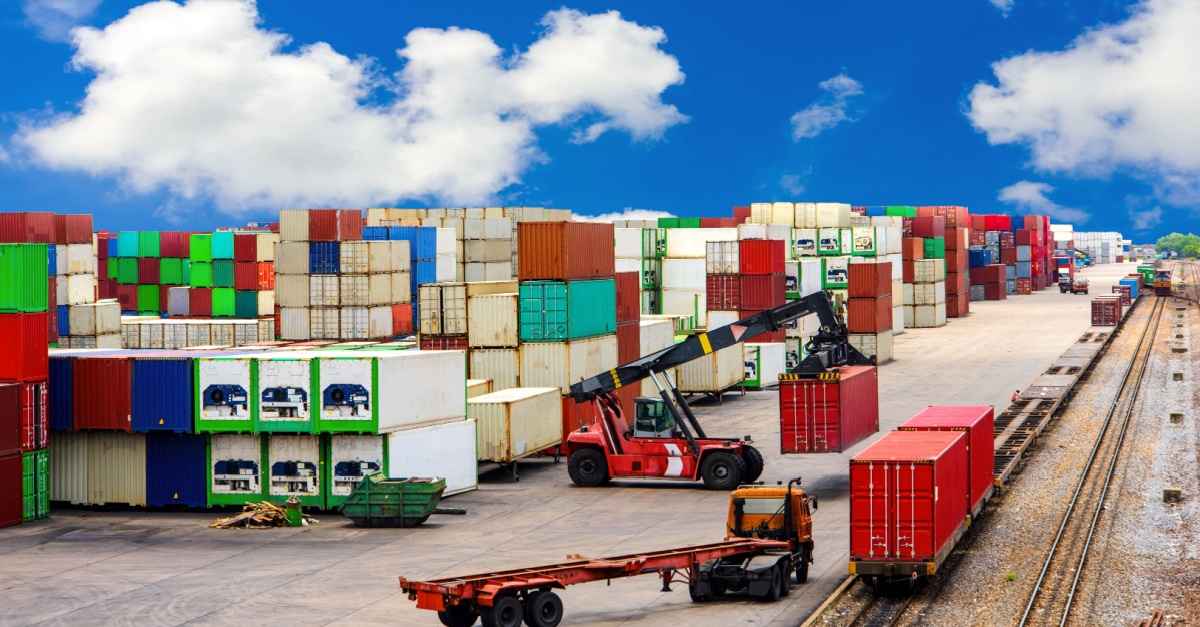

Businesses today are under increasing pressure to deliver products faster while also minimizing their environmental impact. As consumers grow more eco-conscious and regulations limit carbon emissions, the freight industry is tasked with balancing speed and sustainability.
Fortunately, this isn’t a zero-sum game. Intermodal freight, blending the strengths of multiple transport modes (rail and truck, etc.) presents a viable, future-ready solution. And modern technology and solutions help businesses avoid the hard choice between speed and sustainability.
Unlike single-mode shipping such as long-haul trucking, intermodal takes advantage of each mode’s unique strengths to optimize delivery performance and cost. It goes hand in glove with transloading, the process of transferring freight from one mode to another at a port, rail hub, or warehouse/distribution center.
The benefits are substantial. Cost efficiency is one of the biggest advantages. Rail is more fuel-efficient than trucking over long distances, which can lead to significantly lower costs per mile. Meanwhile, drayage trucks handle the first and last mile, providing flexibility and access to final destinations that rail alone can’t reach.
Reliability is another key benefit. Modern intermodal freight networks have improved significantly. Rail infrastructure, advanced tracking systems, and dedicated lanes all help avoid the unpredictability of highway traffic and driver shortages.
One of the most compelling arguments for intermodal freight is its reduced environmental impact. Trains are up to four times more fuel-efficient than trucks and can move 1 ton of freight more than 470 miles on a single gallon of fuel. As a result, intermodal shipping produces significantly fewer greenhouse gas emissions than long-haul trucking alone.
Intermodal freight also contributes to less highway congestion, leading to fewer emissions and improved public infrastructure lifespan. For companies focused on lowering their Scope 3 emissions, intermodal transportation is a practical step toward achieving measurable sustainability goals.
At the heart of intermodal’s environmental advantage is rail, which plays a pivotal role in reducing the overall carbon footprint of freight movement. When used for the longest leg of a journey, rail cuts down on fuel consumption dramatically compared to full truckload hauls. And with the rise of electrified rail networks and investment in cleaner locomotives, the sustainability impact will only grow stronger over time.
Advanced routing and optimization technology further enhances the eco-efficiency of intermodal solutions. By analyzing real-time data and using predictive algorithms, shippers can avoid empty miles, optimize load capacity, and streamline transfers between modes to ensure the most efficient, least carbon-intensive routes possible.
There’s a common misconception that intermodal freight comes at the cost of slower delivery. But with today’s digital logistics platforms, real-time visibility tools, and seamless intermodal hubs, shippers no longer need to compromise on speed.
Smart technology enables precise shipment tracking, ETA notifications, and exception alerts, giving businesses and their customers full transparency throughout the journey. Additionally, coordinated transfers between truck and rail ensure minimal dwell time at intermodal terminals, keeping freight moving smoothly and efficiently.
In many cases, intermodal transit times are comparable to truckload shipments over long distances. This is especially true when factoring in potential delays caused by traffic, weather, or hours-of-service (HOS) regulations affecting long-haul drivers. With the right planning and partnerships, intermodal can match or even exceed single-mode delivery performance.
At VCPB Transportation, sustainability is a commitment as well as a specialty. We have long understood that future proofing logistics require innovation as well as responsibility. That’s why VCPB has heavily invested in intermodal infrastructure and partnerships that prioritize environmental stewardship without sacrificing service quality.
VCPB’s advanced TMS and intermodal optimization tools ensure every shipment is routed for maximum efficiency and minimum emissions. Whether you’re moving freight regionally or across the country, our team leverages real-time data and carrier performance insights to provide smart, reliable solutions tailored to your business needs.
VCPB also offers full-service intermodal logistics, including:
By combining technology, experience, and sustainability-focused practices, VCPB empowers clients to meet their logistics goals while actively reducing their environmental impact.
In a supply chain environment that demands both speed and sustainability, intermodal shipping offers the best of both worlds. With VCPB Transportation as your logistics partner, you gain access to efficient, reliable, environmentally responsible shipping solutions that scale with your business.
Contact VCPB to learn how our intermodal services can help you reduce your carbon footprint without slowing you down, and start shipping with us today!